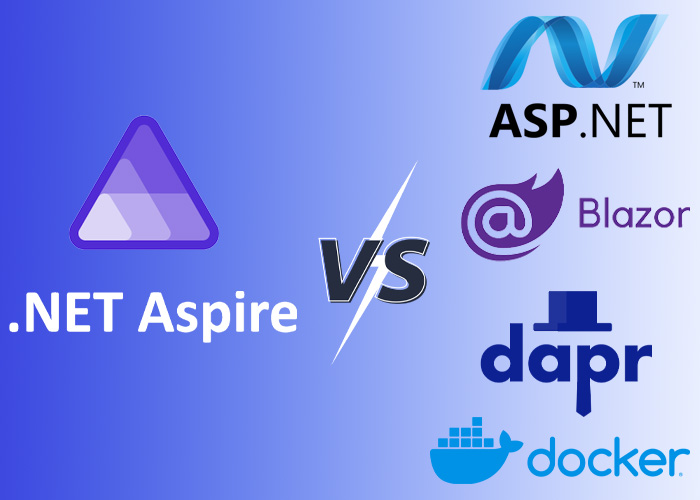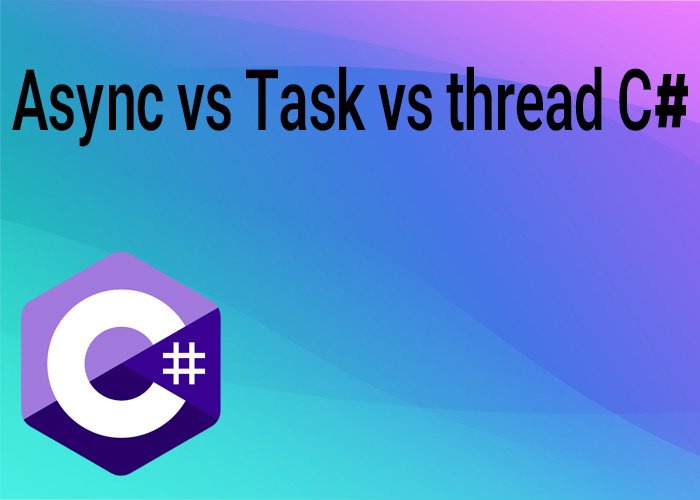Introduction to .NET Aspire in Comparison to Other Technologies
In this article, we aim to provide a detailed comparison of .NET Aspire with various other technologies including ASP.NET, Blazor, Dapr, and Docker. Our goal is to help developers understand where .NET Aspire stands in the modern technology landscape and how it can be beneficial for building cloud-native applications.
What is .NET Aspire?
.NET Aspire is an opinionated, cloud-ready framework designed to simplify the development of observable, production-ready, and distributed applications. It is built on top of the .NET platform and delivered through a collection of NuGet packages that address specific cloud-native concerns. .NET Aspire helps developers by providing tools and patterns for building and managing microservices and distributed systems, especially in a development environment.
.NET Aspire vs ASP.NET
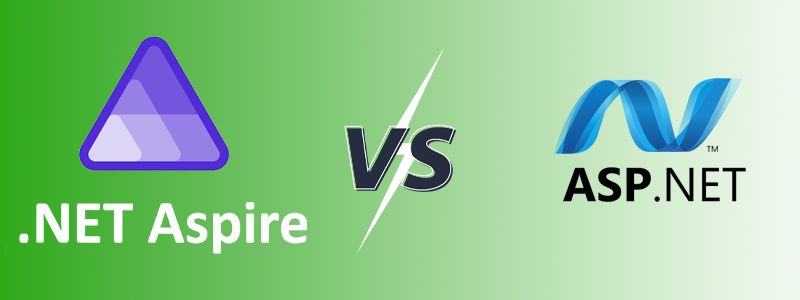
ASP.NET is a mature framework for building web applications and services on the .NET platform. It includes features like MVC (Model-View-Controller) architectures, web API support, and dynamic page generation with Razor pages. On the other hand, .NET Aspire focuses more on the orchestration of microservices and the seamless integration of various components such as databases, caching, and messaging services.
Key Differences:
- Architecture: While ASP.NET can be used to build both monolithic and microservices architectures, .NET Aspire is specifically designed to enhance the microservices development experience.
- Cloud-Native Support: .NET Aspire provides built-in support for cloud-native features like service discovery, dynamic configuration management, and inter-service communication, which are less inherent in ASP.NET without additional tooling or libraries.
- Development Environment: .NET Aspire offers specialized tooling and templates in Visual Studio and the .NET CLI to streamline the setup and debugging of distributed applications locally, which can be more complex in traditional ASP.NET applications.
.NET Aspire vs Blazor
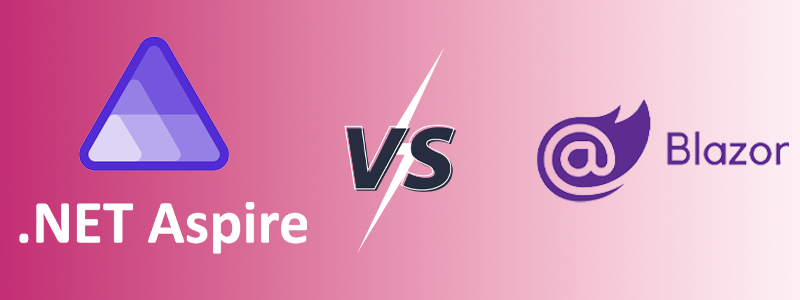
Blazor is a framework within the ASP.NET ecosystem that allows developers to build interactive web UIs using C# instead of JavaScript. It is a powerful tool for web development, enabling rich client-side applications with .NET running on WebAssembly. Comparatively, .NET Aspire is not limited to web development but focuses on the backend orchestration of cloud-native services and applications.
Key Differences:
- Application Focus: Blazor is primarily used for building web frontends and can operate either on the server (Blazor Server) or on the client-side (Blazor WebAssembly). .NET Aspire, however, is backend-oriented, dealing with the orchestration of services and providing infrastructure for distributed systems.
- Use Case: Blazor is ideal for scenarios where you want a single-page application (SPA) experience similar to Angular or React but wish to stay within the .NET ecosystem using C#. .NET Aspire is suited for creating scalable microservices that can be managed and deployed in a cloud environment, focusing on backend services rather than frontend development.
- Interoperability: While Blazor applications can be a part of the services managed under .NET Aspire, especially when building full-stack .NET applications, .NET Aspire provides the backend services that a Blazor frontend might consume. This includes leveraging .NET Aspire’s capabilities for service discovery, configuration management, and resiliency features.
.NET Aspire complements Blazor by handling the complexities of microservices architectures and cloud-native deployments, which allows Blazor applications to function smoothly in a distributed environment.
.NET Aspire vs Dapr
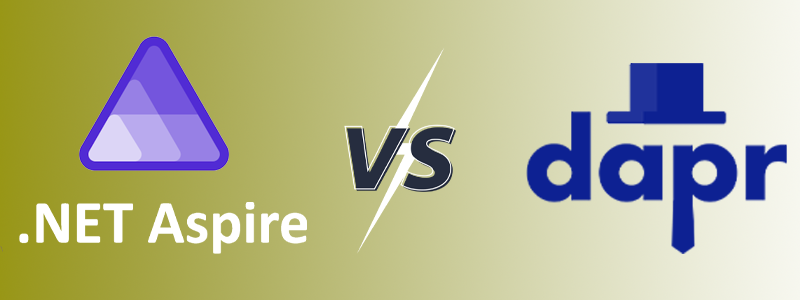
Dapr (Distributed Application Runtime) is an open-source, portable, event-driven runtime that makes it easy to build resilient, microservice stateless and stateful applications that run on the cloud and edge. Dapr provides building blocks for pub-sub messaging, state management, and more, which simplifies the development of high-performing, resilient applications.
Key Differences:
- Runtime vs. Framework: Dapr is a runtime that provides a set of APIs accessible via standard HTTP or gRPC protocols, which abstracts much of the complexity of building microservices. It is language-agnostic and can be used with any programming framework. In contrast, .NET Aspire is a framework built specifically for .NET developers, offering tools and extensions tailored to the .NET ecosystem.
- Building Blocks: Dapr offers built-in components for common capabilities in distributed systems such as state management, service invocation, and pub/sub messaging. While .NET Aspire integrates with these system capabilities, it primarily enhances .NET applications through configuration, development tooling, and deployment facilities specific to .NET.
- Community and Ecosystem: Dapr benefits from a broad community across different programming languages and frameworks, providing a versatile toolset that can be adopted in diverse environments. .NET Aspire, while also open and community-driven, is specifically geared towards developers in the .NET community, ensuring tight integration with other .NET services and tools.
.NET Aspire and Dapr can be used together to leverage the strengths of both platforms: .NET Aspire for its deep integration into the .NET development experience, and Dapr for its cross-platform, language-agnostic capabilities that facilitate building and running microservices.
.NET Aspire vs Docker
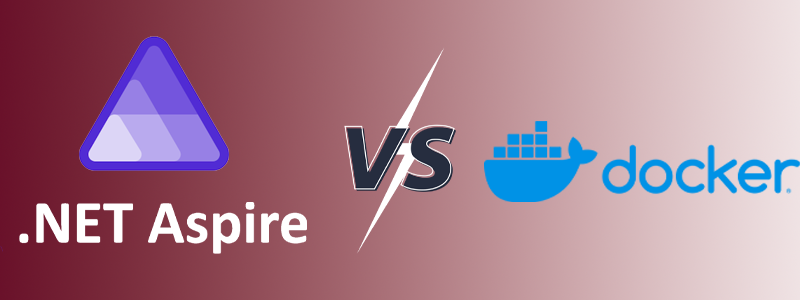
Docker is a platform and tool for building, distributing, and running Docker containers. It offers a standardized unit of software, packaging up code and all its dependencies so the application runs quickly and reliably from one computing environment to another. .NET Aspire, on the other hand, is a framework designed to streamline the development of cloud-native .NET applications by providing an opinionated set of tools and libraries.
Key Differences:
- Purpose and Scope: Docker focuses on containerization technology that enables applications to run in isolated environments. It's primarily concerned with packaging, deployment, and runtime isolation, which are essential for ensuring that applications perform consistently across different environments. .NET Aspire, while it can utilize Docker for deploying services, primarily enhances the development experience by simplifying the management of application dependencies and configurations in a cloud-native setting.
- Application Development vs. Deployment: Docker is not specific to application development; instead, it's used for creating containers that encapsulate applications and their environments. .NET Aspire provides a development framework and runtime support to build applications, focusing on how they are architected and interact in distributed environments.
- Integration with Cloud-Native Technologies: Docker serves as a foundation for hosting any application on any platform that supports containerization, making it extremely versatile. .NET Aspire integrates with technologies like Docker to provide a seamless development and deployment experience, especially when building applications that are intended to operate in a microservices architecture.
Using Docker with .NET Aspire is a common practice where Docker handles the deployment and runtime aspects, and .NET Aspire focuses on the architectural and operational concerns within the application's lifecycle. This combination ensures that .NET applications not only run well in a cloud-native ecosystem but also benefit from the robustness of Docker's containerization capabilities.
Conclusion
Throughout this article, we've explored how .NET Aspire compares with several key technologies within the modern software development landscape. Each technology—ASP.NET, Blazor, Dapr, and Docker—plays a crucial role in the ecosystem, catering to different aspects of application development and deployment:
- ASP.NET is ideal for traditional web application frameworks but may require additional configurations for cloud-native features, which are inherently supported by .NET Aspire.
- Blazor offers a robust front-end development experience using C#, complementing .NET Aspire's backend capabilities to create full-stack solutions seamlessly.
- Dapr provides an event-driven, portable runtime that enhances application resilience and interoperability across different environments and programming languages, which can be strategically combined with .NET Aspire for enhanced microservices development.
- Docker focuses on the containerization and consistent deployment of applications across various environments, supporting .NET Aspire's cloud-native development approach by ensuring applications are easily packaged, shipped, and run anywhere.
.NET Aspire stands out by providing an opinionated, streamlined approach to building distributed applications in the .NET ecosystem. It simplifies the complexities typically associated with microservices and cloud-native development, allowing developers to focus more on building robust, scalable applications rather than managing the intricacies of the infrastructure.
By understanding the strengths and focal points of each technology, developers can make informed decisions on how to best leverage these tools in concert, maximizing the effectiveness of their development efforts in the .NET ecosystem.
